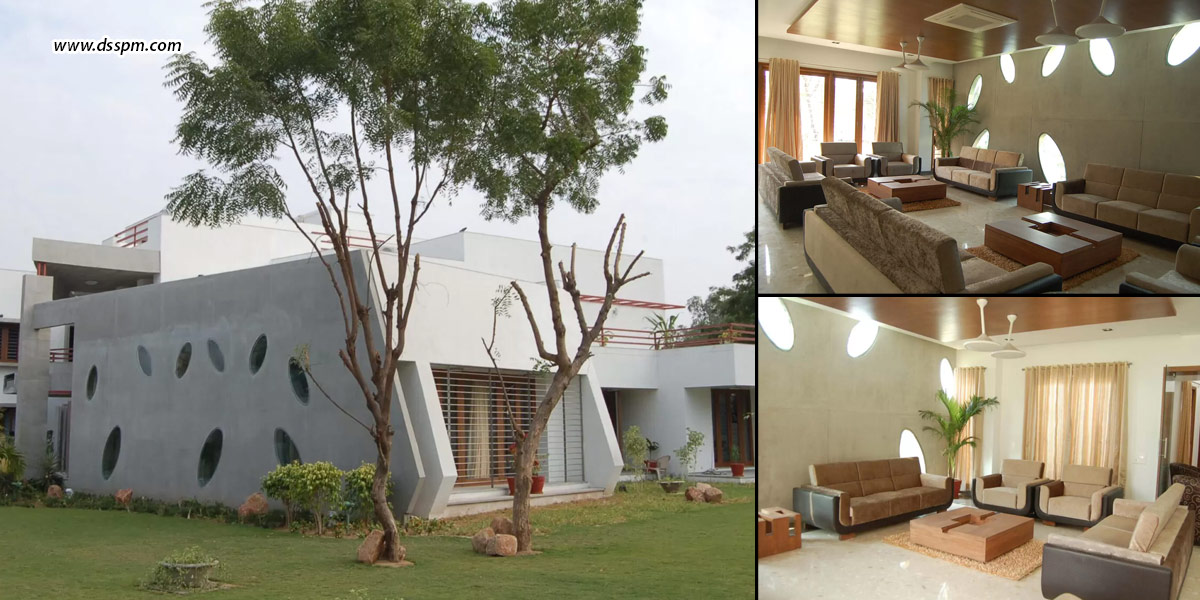Achieving a harmonic balance between form and function is the goal of perfection in the fields of architecture and interior design. When practical functionality blends with aesthetic appeal, true artistry is shown, beyond simple structures and settings. Let’s explore the fine skill of combining form and function, revealing the fundamental ideas that guide designers in the right direction.
Defining form and function
In design, form encompasses the shapes, visual components, and aesthetic attributes that elicit visceral and emotional reactions. This covers a design’s entire visual language, materials, and style. On the other hand, function refers to a design’s intended use and practical utility, which includes aspects like ergonomics and usability. A well-balanced and useful design is characterized by the way form and function interact, wherein practical application and aesthetic appeal blend together to produce a whole and fulfilling experience.
Concepts underpinning the balancing act
- Human-centric design: Design should improve the lives of people who use the space, taking into account their needs, preferences, and interactions with the surroundings.
- Comfort and ergonomics: Design cannot be successful solely on the basis of aesthetics; ergonomics is essential to creating comfortable and user-friendly spaces. Furniture, layout, and spatial arrangements must all align with human proportions and movements.
- Integration of sustainability: Sustainability is a common foundation for form and function. In addition to improving environmental well-being, designs that place a high priority on eco-friendly materials, energy efficiency, and ethical building techniques also show a careful consideration of utility.
- Integrated design language: To achieve balance, a harmonic design language is essential. A sense of unity is created when visual components, colour schemes, and materials are consistent, guaranteeing that the intended purpose and the aesthetic appeal are smoothly aligned.
Challenges in achieving balance
Budgetary constraints make it difficult to strike a balance between form and function. Nonetheless, inventive material selections and design solutions might nonetheless provide amazing outcomes. Furthermore, the difficulty of foreseeing changing user needs emphasizes how crucial flexibility is to design. Spaces that are flexible enough to accommodate shifting needs without sacrificing design integrity are examples of forward-thinking design.
The future landscape, where form and function come together
The way form and function interact is changing as a result of the incorporation of smart technologies. Future designs that integrate dynamic surroundings, adaptable features, and cutting-edge materials are laying the groundwork for a time when utility and aesthetics will advance simultaneously. The growing emphasis on well-being in design also means that biophilic components are receiving more attention. Natural light, vegetation, and ergonomic furniture prioritize utility, while also improving the overall visual experience.
The skill of combining form and function harmoniously is a monument to human intellect and creativity within the larger fabric of design. From modern interiors that accommodate changing lifestyles to architectural marvels that stand the test of time, every project offers a different perspective on this delicate balance. The heritage of genuinely great design is found in the capacity to produce environments that not only enhance the lives of those who occupy them, but also catch the eye of onlookers as designers continue to manage the challenges of function and beauty.
The way we experience and engage with our created environments will continue to be shaped by the fascinating progression of form and function in the future. The journey is continuous, with every new project adding another brushstroke to the ever-evolving canvas of design excellence. The future holds an exciting progression where the interaction of form and function will continue to alter the way we experience and engage with our designed environments. This is why the role of professionals is highlighted, as such experts have the know-how and talent of balancing form and function in their designs, which can be visually appealing to the eyes, and equally practical and functional to use.
If you’re looking to build one such structure too, you can always approach DSSPM, where the best architects & interior designers in Ahmedabad have been working together for years to build a portfolio covering prestigious names like IIM-A, MICA, Arvind Ltd., Engineering College Botad, Pharmacy College Mehmadabad, Hotel Eulogia, Anant CSR, Mango Resort Sasan, Grand Eulogia, Cera, Godrej, Boyce, and many other hotels, resorts, luxurious homes, villas, farmhouses, and corporate offices!

